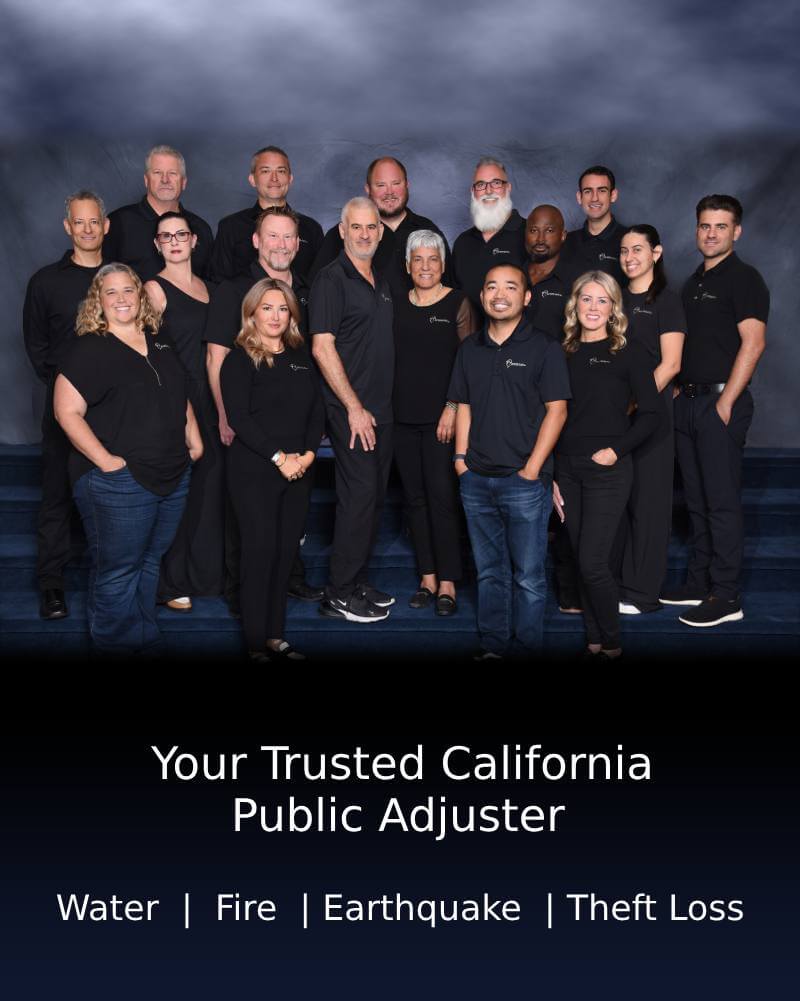The California Earthquake Authority: What is it? What Can it Do For You?
How much do you know about the California Earthquake Authority? From the name of the organization, you can imagine that it might play a role in statewide earthquake risk mitigation. Although that is true, it does not fully explain the unique role of the CEA as a government entity.
We’ve worked with dozens of homeowners who weren’t familiar with the CEA, so we created a guide to help you understand the function of this important organization. Drawing from our experience as public adjusters, we’ve written plain-text explanations of some of the key points homeowners should know:
History of the CEA
The California Earthquake Authority is a nonprofit agency that was created to respond to the unique severity of the earthquake threats in the state. After the Northridge earthquake, private insurance providers essentially stopped writing new homeowners’ insurance policies. They considered earthquake risks to be “uninsurable” but California state law mandated that they had to offer earthquake policies with homeowners coverage. After considering their options, they simply ceased operations within the Golden State.
State legislators were forced to act in order to avoid an unavailability crisis in the homeowners’ insurance market. At the same time, they also refused to leave Californians to fend for themselves in the event of another disaster. They rejected all proposals to lift the mandatory-offer requirement for insurance providers. Instead, they passed the legislation that created the California Earthquake Authority.
The CEA was formed in 1995, and it is the only publicly managed, privately funded provider of residential earthquake insurance in the United States. It does not receive any funding from the federal government, and it does not provide support for any outside states.
How it Helps Homeowners
The CEA was created to ensure the market availability of earthquake insurance policies. Today, the agency offers earthquake insurance for most residential dwellings, including mobile homes and manufactured homes.
So, how does this help homeowners in practice?
“The only way to be financially secure while facing the damages that an earthquake can cause is to have a separate earthquake insurance policy, the kind that’s only available by the California Earthquake Authority,” says Glenn Pomeroy, the CEO of the CEA.
The formation of the CEA made earthquake insurance more readily available. If your homeowners’ insurance provider participates in the CEA, you can request an offer of earthquake insurance, and a CEA policy can be written at any time. This helps guarantee that families will have access to earthquake policy options, even if they’re already in the middle of an annual contract without coverage.
The CEA does not operate through taxpayer funding. In fact, it receives no financial support from the general state budget. The agency gets funding from private sources like investment returns and mandatory contributions from participating insurance companies.
Lastly, the law requires that the CEA must be actuarially sound, meaning that financial experts have determined the organization has sufficient funds to pay claims from even a devastating earthquake. The overall strength of the CEA is an enormous asset for homeowners because it means the agency can afford to pay fairly for claims. Premium rates have dropped by half since the CEA was formed, and policies currently average about $800 annually.
How to Get CEA Coverage
After the Ridgecrest earthquake in 2019, misinformation began to circulate about earthquake insurance. State insurance commissioner Ricardo Lara issued a statement, saying: “We have received reports that some insurers and agents are telling consumers there is a moratorium [on new policies], when in fact you can buy earthquake insurance today. While we have Californians’ attention, insurers should not create barriers to homeowners or renters who want to protect their assets from earthquakes.”
If you’re reading this article in response to a recent earthquake, you should know that you should still purchase a CEA earthquake insurance policy. The one major limitation is that the authority does not provide coverage for earthquakes that are seismically related to the recent event and that occur within 15 days of the previous earthquake.
So, how do you begin purchasing a policy? The California Earthquake Authority does not sell policies directly to homeowners and renters. Instead, it offers them to consumers via a network of participating providers. Most major insurance providers are CEA policy providers. To find out if your provider works with the CEA, you can call your insurance agent or browse the full list of residential providers.
In addition to basic dwelling coverage, the CEA also offers special limits coverage options. You may also be eligible to take advantage of new premium discounts for earthquake-loss-mitigation steps. To learn more about rates, premiums and deductibles for earthquake insurance – visit the rate calculator on the official website of the California Earthquake Authority.
Have more questions about earthquake insurance coverage or the CEA? Don’t hesitate to reach out to us! As public adjusters, we’re not involved in the sale of insurance coverage and we don’t receive compensation if you purchase a policy. We’ve seen the aftermath of earthquake damage firsthand, and we’d like to help you make sure that you’re protected before the unexpected occurs.
The California Earthquake Authority (CEA) can provide earthquake insurance coverage to help ease your worries. But what exactly does comprehensive earthquake insurance coverage entail?
Have more questions about earthquake insurance coverage or the CEA? Don’t hesitate to reach out to us! As public adjusters, we’re not involved in the sale of insurance coverage and we don’t receive compensation if you purchase a policy. We’ve seen the aftermath of earthquake damage firsthand, and we’d like to help you make sure that you’re protected before the unexpected occurs.




































